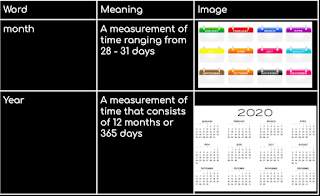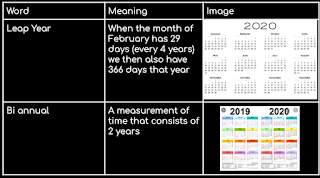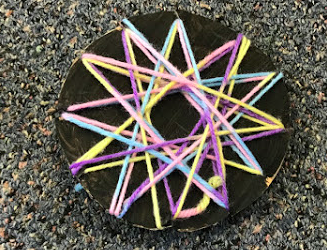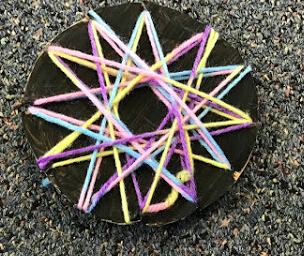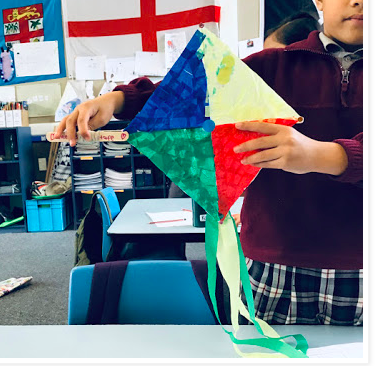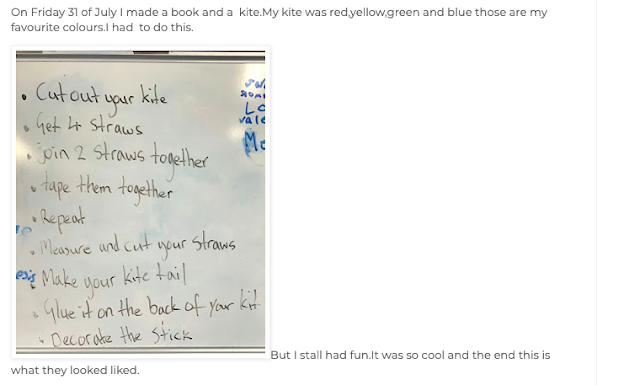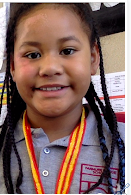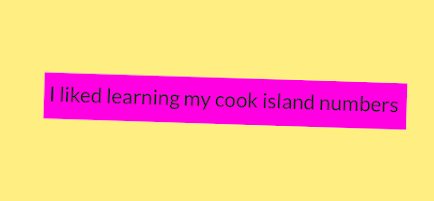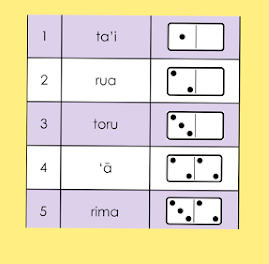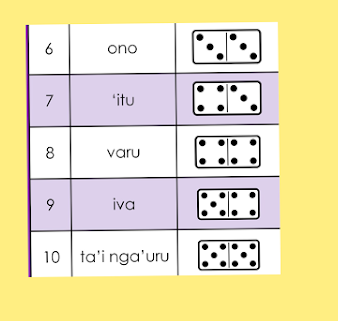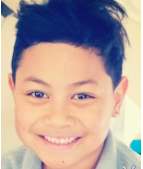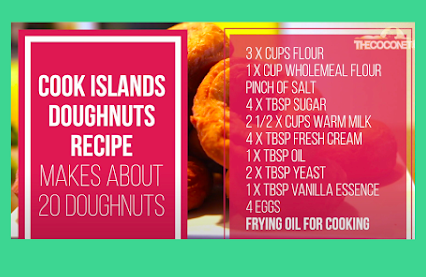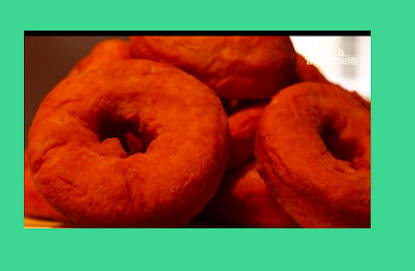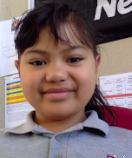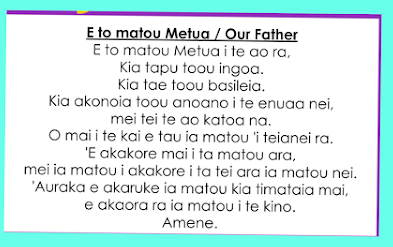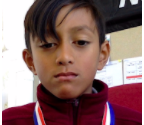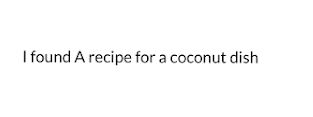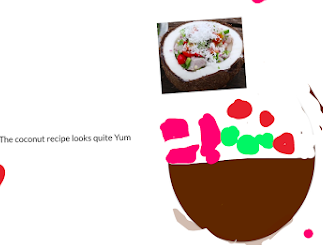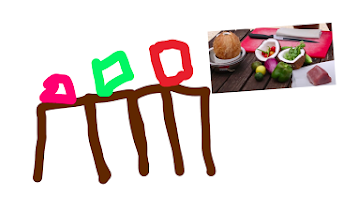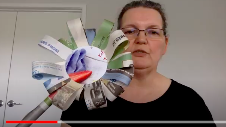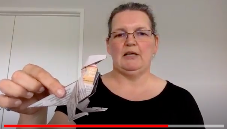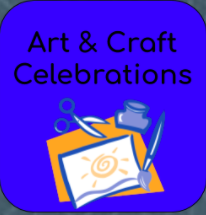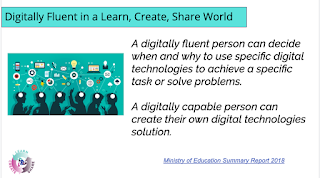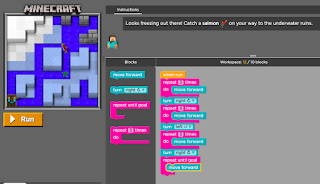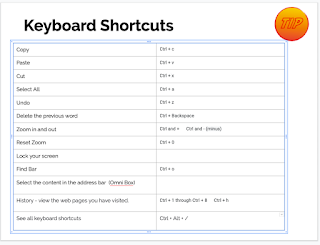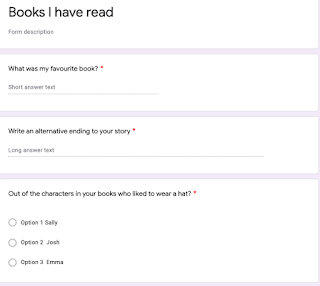Friday 27 November 2020
Tuesday 22 September 2020
Designing a Digital Maths Dictionary
My main focus of inquiry this year is word vocabulary through all curriculum areas. last week my students and myself have begun putting together a digital math dictionary to help with all the math language that we have been learning over the year.
Our first slides are all around time. I have tried to keep the language child friendly while still providing the correct language. To help me do this I have three columns, the first has the maths word, second the math meaning and third I have tried to add an image to help with understanding.
We will continue to add to this as we discover new maths language. I will also be adding the link to my class slides as from next term, so that my students can have easy access.
Tuesday 1 September 2020
Design for learning, Teaching
Over lockdown, to help our students to learn I was making video presentations using screencastify. This provided rewindable learning for my students. When we came back to school, and we were asked to provide Ako Ano's ( rewindable learning) for our students, I decided to continue making these video tutorials for my students to help them with their learning.
Previously I had just recorded myself with a group of students and linked this to the Ako Ano image on their group slide on my site. I found this could be confusing, lots of different voices recorded in real time, for my students, especially if at the end of a session they couldn't remember what their learning was meant to be about.
By changing the way I make the rewindable learning, I have become very critical on myself. I now make a point of referring back to the intended learning intentions, show examples of writing or equipment needed to complete a set task around the learning something I feel I was sometimes missing out in real time. I use the slide show as an introduction to our learning and then use screencastify to record the slides while I talk through the learning with examples for the students to view.
This new system is also a bonus to any students who were out of the class at the time of their groups teaching or absent as they can very easily assess the learning that they may have missed.
Ako Ano Here are my Ako Ano's (rewindable learning)
Saturday 8 August 2020
learning-focused culture
Over the past 3 weeks we have had a learning focus around different cultures. First we had Matariki. We celebrated by incorporating making Matariki stars and Matariki kites into our weekly programme through writing and maths. We made the stars and kites and then wrote up instructions of what materials we needed and how to make the stars and kites.
This week it was Cook Island Maōri Language week. We were kindly shared slides from the RTLB cluster 8 with lots of great clips, images and slides on different aspects of the cook islands from their history of the flag, to cultural dances, food, greetings, colours, numbers and much more. we used these slides to learn more over the week and then each student shared what it was that they had found interesting or had wanted to learn to the class. After the sharing the students made slides to put on their personal blogs of what they had enjoyed.
We also had a group of 8 students who wanted to begin their own dance group, after viewing the cook island dances. They are still practising and are hoping to share the dance with the class in the next few weeks, which I will video and add to this post. Once they have perfected their dance they wish to teach the whole class the dance in our 10 minute dance breaks at reading time.
I feel this was a great learning outcome for all students. they had an awesome time learning about the culture of the Cook Islands. Here is the link to all our individual and class blogs.
Friday 1 May 2020
DFI Computational Thinking
Today is week 8 of our DFI sessions and I am so very grateful that I have been a part of this cohort as I have learnt so much. Being in the junior school I have not used a lot of the tools that are available and especially during this lockdown it has been a great help and provided myself with new ways of connecting to my students.
We have looked at EMPOWERMENT this morning both learners and teachers and how being digitally literate helps both learners and teachers take control of their lives in ways that we could not have imagined.
We have over come barriers of distance and time during this lockdown in being able to access the digital tools required to make learning accessible to all. My example of this would be on my class site for Maths. I wanted to use craft as a way to access maths learning in particular fractions (as in class we would normally use this type of activity in the juniors as a hands on activity helps develop the understanding.
Using a site that was made during DFI on dinosaurs I provided clips of activities to make and then through a slide show provided instructions and explanations of the fractions, for example:-
Take the kitchen roll and cut it in half for the dinosaurs legs or use 4 toilet rolls.
We have looked at EMPOWERMENT this morning both learners and teachers and how being digitally literate helps both learners and teachers take control of their lives in ways that we could not have imagined.
We have over come barriers of distance and time during this lockdown in being able to access the digital tools required to make learning accessible to all. My example of this would be on my class site for Maths. I wanted to use craft as a way to access maths learning in particular fractions (as in class we would normally use this type of activity in the juniors as a hands on activity helps develop the understanding.
Using a site that was made during DFI on dinosaurs I provided clips of activities to make and then through a slide show provided instructions and explanations of the fractions, for example:-
Take the kitchen roll and cut it in half for the dinosaurs legs or use 4 toilet rolls.
When thinking about how to make the dinosaur's , flower etc I needed to be aware that the video clips I was selecting were using nice card and paper that my students might not have access to. I looked around my house and have begun collecting all of my recycled goods that my students may have access to. So I then provided an example of the completed task using what I could easily find around my home.
I have made a new button during DFI on my class site to celebrate my students' art and craft which I have included below.
We also looked at the advice from Woolf Fischer on the need of 5+ a day. In the junior school we already practise this during sharing time, which we aim for after each learning session, where students get to talk about what they have learnt and the audience gets the opportunity to ask questions. But I will now also encourage the use of blog commenting, we were about to learn how to blog when we were forced into shut down, however through online correspondence and talking on the phone one of my pupils has begun to use blogger from home and records his work on a daily basis. I leave comments and he is beginning to reply to my comments. I have asked him to be my blogger expert when we return to school, he is very excited!
Next today we looked at the new digital curriculum that is broken into 2 parts.
1. Digital fluency for example knowing the correct terminology or language
2. Digital technology - providing opportunities for students to create their own digital solutions.
Kerry Boyde-Preece shared with us some very good links and web sites for us to view and discover so that we can help our students attain these goals
We were then given the opportunity to delve deeper block coding and how we could use this with our students. Here is my first attempt of block coding on a Minecraft voyage. It was fun, I'm sure my junior students would love to give it a try as long as it is available or something similar on the iPads. But to also remember that the digital curriculum is not solely on devices it can involve unplugged activities.
In the afternoon we had the opportunity to look and use coding further. I looked at Mihi Maker @ https://make.gamefroot.com/ unfortunately although I got the activity completed I was unable to publish, I just got the circle of doom for 30 minutes so decided to leave the site. If I get the opportunity to try again later in the week I will.
Friday 24 April 2020
DFI Devices
Today we looked at being cybersmart and what this would look like. As teachers we need to empower our students to be positive when online both in their actions and the consistent positive use of language, unlike some of the media they may view which often has a negative view point.
When our students first became 1-1 digital users we needed to make sure that we could engage the students while also making them digital citizens globally.
Be internet Kind
Be internet Brave
Be internet Awesome
Be internet Smart
Be internet Strong
As teachers we need to make deliberate teaching acts of the cyber smart categories to ensure that our students are empowered and have equal equity and access to digital devices and the digital language.
Next we went to Hapara Wow! so much I didn't know, but I am a junior teacher.
Hapara makes sites visible to the student and students learning visible to the teacher.
We looked at how drive folders should be preset at the beginning of the year by one person in the school, because if students are requested to make their own folders they are hidden from teachers view.
We looked at how to view student's blogs and the blog commenting that has been happening.
We looked at sharing - if any documents are in here they need placed into the correct folders at least once a week.
We looked at Class info - this contains students emails and provides the opportunity of changing a students password (in the older years) by having them stand beside you.
Highlights - Can be used to help those students are finding it difficult to click on the correct link etc, not for informing students that they are doing something incorrectly, we should still be walking around our classrooms for that.
We then got the opportunity to feel what it would be like to use a chrome book, instead of our usual laptop and the advantages to our teaching of students by knowing essential short cuts and how the whole system works, therefore enabling us to help our students become more digitally fluent.
Here are a couple of the slide we had to complete during our digital dig of a chrome book. We were encouraged to this with our students at the beginning of each new year
Unfortunately I then had to leave for our school online assembly, but luckily for me it was to cover the digital fluency on iPads. Using them in my class everyday I'm hoping I have a good understanding of this but I will see look at the tasks set.
Screencastify:
We have been looking at how to make a screencastify and were given the task of making a quick screecastify covering one of our cybersmart categories.
Below I chose to use smart surfing, and make a small clip demonstarting to my students how to use our junior search engine Kiddle.
I apologise as I forgot to change the title.
When our students first became 1-1 digital users we needed to make sure that we could engage the students while also making them digital citizens globally.
Be internet Kind
Be internet Brave
Be internet Awesome
Be internet Smart
Be internet Strong
As teachers we need to make deliberate teaching acts of the cyber smart categories to ensure that our students are empowered and have equal equity and access to digital devices and the digital language.
Next we went to Hapara Wow! so much I didn't know, but I am a junior teacher.
Hapara makes sites visible to the student and students learning visible to the teacher.
We looked at how drive folders should be preset at the beginning of the year by one person in the school, because if students are requested to make their own folders they are hidden from teachers view.
We looked at how to view student's blogs and the blog commenting that has been happening.
We looked at sharing - if any documents are in here they need placed into the correct folders at least once a week.
We looked at Class info - this contains students emails and provides the opportunity of changing a students password (in the older years) by having them stand beside you.
Highlights - Can be used to help those students are finding it difficult to click on the correct link etc, not for informing students that they are doing something incorrectly, we should still be walking around our classrooms for that.
We then got the opportunity to feel what it would be like to use a chrome book, instead of our usual laptop and the advantages to our teaching of students by knowing essential short cuts and how the whole system works, therefore enabling us to help our students become more digitally fluent.
Here are a couple of the slide we had to complete during our digital dig of a chrome book. We were encouraged to this with our students at the beginning of each new year
Unfortunately I then had to leave for our school online assembly, but luckily for me it was to cover the digital fluency on iPads. Using them in my class everyday I'm hoping I have a good understanding of this but I will see look at the tasks set.
Screencastify:
We have been looking at how to make a screencastify and were given the task of making a quick screecastify covering one of our cybersmart categories.
Below I chose to use smart surfing, and make a small clip demonstarting to my students how to use our junior search engine Kiddle.
I apologise as I forgot to change the title.
Friday 17 April 2020
DFI Enabling Access - Sites
Today we join again through google meet. This is now our new normal and is very appropriate for the Manaiakalani theme of visible learning.
The Manaiakalani inclusive model was first developed in 2006 with the first cluster of schools. In 2015 the model was taken wider into what are now known as outreach clusters and again in 2017.
Manaiakalani now reaches 24000 learners across New Zealand. Although there is lots of diversity within the different schools, because the same shared language is used we can all connect.
Next we viewed examples of sites and evaluated these. this was for visual appeal and user experience. It was good to see how college and higher primary school use their sites compared with myself in the lower junior school.
We then got time to talk about our own sites with our group and take on board comments that were shared. We then spent time looking at our sites fixing up what needed to change and making videos, slides etc for the coming week.
I was unhappy with my button for Art & Craft Celebrations as I quickly made it yesterday after receiving emails of art from my students.
I tried and tried but the new button kept on having an ugly outline that I didn't want, but Gerhard to the rescue. I had downloaded the button as a png but then screen shot to add to my site, all I had to do was drag the png to my site.
I have also made new slides for next week and recorded my big book and activities for the week. A very productive time.
The Manaiakalani inclusive model was first developed in 2006 with the first cluster of schools. In 2015 the model was taken wider into what are now known as outreach clusters and again in 2017.
Manaiakalani now reaches 24000 learners across New Zealand. Although there is lots of diversity within the different schools, because the same shared language is used we can all connect.
Next we viewed examples of sites and evaluated these. this was for visual appeal and user experience. It was good to see how college and higher primary school use their sites compared with myself in the lower junior school.
We then got time to talk about our own sites with our group and take on board comments that were shared. We then spent time looking at our sites fixing up what needed to change and making videos, slides etc for the coming week.
I was unhappy with my button for Art & Craft Celebrations as I quickly made it yesterday after receiving emails of art from my students.
I tried and tried but the new button kept on having an ugly outline that I didn't want, but Gerhard to the rescue. I had downloaded the button as a png but then screen shot to add to my site, all I had to do was drag the png to my site.
I have also made new slides for next week and recorded my big book and activities for the week. A very productive time.
Friday 3 April 2020
DFI Collaborate Sites
We began our day by completing a gratitude chain, stating something that we were grateful for and acknowledging the person before. I felt that this would be a great ice breaker starting back with our students online.
Next we looked at visible Kaupapa:-
visible being a clear crisp vision - of our students learning both for students, whanau at home and teaching colleagues. Learning requires to be rewindable and students need to be able to access their learning and next steps in a way that doesn't require them to read their teachers mind. This was once again backed up by experts (in this case, John Hattie) that if students know the learning process, have genuine access and are the centre of their learning they are much more successful.
We looked at the first part of multi text and multi modal delivery where the student is able to self scaffold and become engaged in their learning in an exciting format using a range of texts and modals that would appeal to their style of learning.
Making a site was a main focus of the day, I liked how buttons can now be made on the site without having to make in google draw first, especially if you want to get a site up and running quickly. The personal touch can always be added at a later date.
We the split into small groups to make our own multi text / multi modal site. our group used jamboard that was new to me, to arrange our thoughts and ideas. I feel this could be a great way of brainstorming with my younger students and they would love changing the colour of the post it notes to show who had added the note.
Finally we made our own multi text / multi modal site. My group were working on the text Clever Little Dinosaur and using a frame work we had to develop knowledge and ideas around dinosaurs. Here is my end result (still needs some tweaking).

link
Next we looked at visible Kaupapa:-
visible being a clear crisp vision - of our students learning both for students, whanau at home and teaching colleagues. Learning requires to be rewindable and students need to be able to access their learning and next steps in a way that doesn't require them to read their teachers mind. This was once again backed up by experts (in this case, John Hattie) that if students know the learning process, have genuine access and are the centre of their learning they are much more successful.
We looked at the first part of multi text and multi modal delivery where the student is able to self scaffold and become engaged in their learning in an exciting format using a range of texts and modals that would appeal to their style of learning.
Making a site was a main focus of the day, I liked how buttons can now be made on the site without having to make in google draw first, especially if you want to get a site up and running quickly. The personal touch can always be added at a later date.
We the split into small groups to make our own multi text / multi modal site. our group used jamboard that was new to me, to arrange our thoughts and ideas. I feel this could be a great way of brainstorming with my younger students and they would love changing the colour of the post it notes to show who had added the note.
Finally we made our own multi text / multi modal site. My group were working on the text Clever Little Dinosaur and using a frame work we had to develop knowledge and ideas around dinosaurs. Here is my end result (still needs some tweaking).

link
Friday 27 March 2020
DFI Friday - All connected through Meet
Today we looked at the need for our students to share their learning and how connected learners share. Sharing has been happening since time began but the way we can share all began to change in 2005 with the introduction of youtube, twitter etc.
Our sharing and responses to what we shared became automatic in far reached places, with instant response, unlike our usual mailing system. Although feed back and feed forward has always been available in our 1-1 or group discussions learners can now establish a much wider and authentic audience.
Students can share with a purpose and the audience can also choose to listen to you or not. Our chosen App, Blogger is not the coolest but it contains the all important 3 check system, it is secure and legal for all our school aged students.
Next we learnt how to use and make google forms, this could become very useful in these lock down times
Next we moved on to google My Maps. I had fun with this even though the sound and images were going in and out on my computer, the slide deck was very helpful. Here is a map of my twice a day walk with my dog Ernie. The first trip is in the dark at 4am and my second trip is between 6-7pm (daylight at the moment , but not for much longer).
I therefore walk 2.64 KM a day with my dog. My 10,000 steps are easy when you take into account my day at school with juniors and duties etc.
Sheets was next, this was a lot more tricky as I have not ever made my own sheet to add data. I use assembly a lot and e-asttle to add my student data but not starting from scratch. this is where I need to go and practise more!!!!
Wednesday 25 March 2020
Session 3 Digital Fluency Intensive
At todays session we only had 6 present in person but everyone else managed to join our session through the hang outs meet link. It was good practice for what is to come in the pursuing weeks.
We learnt how to split our screen so that we could view a shared document while still seeing who the main speaker was delivering the document/slide/video etc.
We then covered the importance of CREATE and how this is the hook to our kids learning. Creativity should be at the centre of our teaching practise to allow our students the opportunity to become problem solvers, communicators and collaborators.
Before covering CREATE today I had always seen Learn, Create , Share as the order ie, we teach in order for the students to learn, they then create something they have learnt and then share to buddy, through blog, to class etc. I had not personally thought of the hook of creating as the beginning element to hook our students into the learning.
Next we set up our own Youtube channel and customised the settings. We shown how to make a playlist that will only play what you have selected so that our students can't disappear down the rabbit hole of extra clips unrelated to the learning focus. As a cluster we should be mindful that when we embed videos we use google drive not youtube.
Google Drawing
In this session we practised drawing around an image and filling in the image with our chosen colours. We had the pleasure of viewing some work from students of Panmure Bridge school who had really developed this skill and then used it in animation movies that they had made.
Slides for animation
In this session we chose a background image (I chose Clarks beach) and then we added a ball. We had to duplicate slides in order to make the ball appear that it was rolling across the beach. Great Fun!!
Finally we ended the day with a choice of what to practise or make I chose to make a digital Pepeha. Here it is;
Looking forward to the next session.
Tuesday 17 March 2020
Post DFI session 2
Today I had a practice joining hangout meet with Sally from our group. I am very pleased to say that this went very successfully. We couldn't record because we don't have the app yet, but here is a photo of my calendar reminder.
Friday 13 March 2020
Session 2 Digital Fluency Intensive
Today was another exciting day. We looked at hangouts, how to access through gmail, the App or through the calendar.
We then had the opportunity to be part of a group hangout using comments and google map.
Next we delved into the Manaiakalani pedagogy of learn, Create, Share with a focus on accelerated learning.
Ako:
This was looking at how in harnessing technology we are able to amplify our effective teachers practice.
Recognise - Provide authentic texts
Develop thinking critically and strategies
Develop collaborating
Provide more choices
Amplify - Getting ie. resources to help with learning for
example,Tki, NZ curriculum, Teachers pay Teachers …
- Giving ie. Sharing through blog/site
Turbo Charge - Provide students with the opportunity to unpack their learning
through clips,
Images, rewindable learning on site
Effective practice removal of barriers, opportunities
For new ways of learning
We need to remember that each school will be different as we all have individual communities.
Gerhard then introduced us to Keep and all of its amazing features while also helping us clean/organise our emails and calendar.
After lunch we were back to hangouts.
To help us become more proficient at this, we have used calendar, to set up 2 hangouts with members of our cohort during the week.
Friday 6 March 2020
Session 1: Digital Fluency Intensive
I have been a part of the Manaiakalani cluster for ten years this year and I am always surprised at how I discover or relearn something new in every session that I attend.
An example of this would be the strong partnership developed between whānau and schools in the very beginning of the introduction of digital devices within schools. I had no idea that parents and whānau were asked how much they could afford to contribute to their child's access to a device or how whānau and students could see Saint Kentigerns over the river and hoped to have similar access to technology.
After today in my professional workflow I will be making sure that I always set up new folders as share with anyone with the link and only change this with documents that I don't want visible to all. I will also be taking the short-cut of Shift z with me where I can add shared items to my drive where I want rather than move (so that the file doesn't then move for others who have access to the file).
I was also made aware of 'Voice Typing' in 'Tools'. I am excited to use this with some of my students - especially those who have great ideas but that struggle with writing.
Another tool that I discovered today was 'explore' at the bottom of documents where you can complete web, images or doc searches.
To finish our day we had to create a visual poster or news letter. I chose to make a poster as an example to my students of the learning that we have been focusing on this week in maths. we were advised to set up as A5 so that it can been seen on our screen and to use tools to set up tables to keep our images where we want them to be. Another tip was to search transparent png or to remove back ground from images 'remove.bg'. When we were happy with our design we removed the black table lines by going to 'format table'
An example of this would be the strong partnership developed between whānau and schools in the very beginning of the introduction of digital devices within schools. I had no idea that parents and whānau were asked how much they could afford to contribute to their child's access to a device or how whānau and students could see Saint Kentigerns over the river and hoped to have similar access to technology.
After today in my professional workflow I will be making sure that I always set up new folders as share with anyone with the link and only change this with documents that I don't want visible to all. I will also be taking the short-cut of Shift z with me where I can add shared items to my drive where I want rather than move (so that the file doesn't then move for others who have access to the file).
I was also made aware of 'Voice Typing' in 'Tools'. I am excited to use this with some of my students - especially those who have great ideas but that struggle with writing.
Another tool that I discovered today was 'explore' at the bottom of documents where you can complete web, images or doc searches.
To finish our day we had to create a visual poster or news letter. I chose to make a poster as an example to my students of the learning that we have been focusing on this week in maths. we were advised to set up as A5 so that it can been seen on our screen and to use tools to set up tables to keep our images where we want them to be. Another tip was to search transparent png or to remove back ground from images 'remove.bg'. When we were happy with our design we removed the black table lines by going to 'format table'
Here is the poster that I designed today.
I am looking forward to next weeks session.
Subscribe to:
Posts (Atom)



